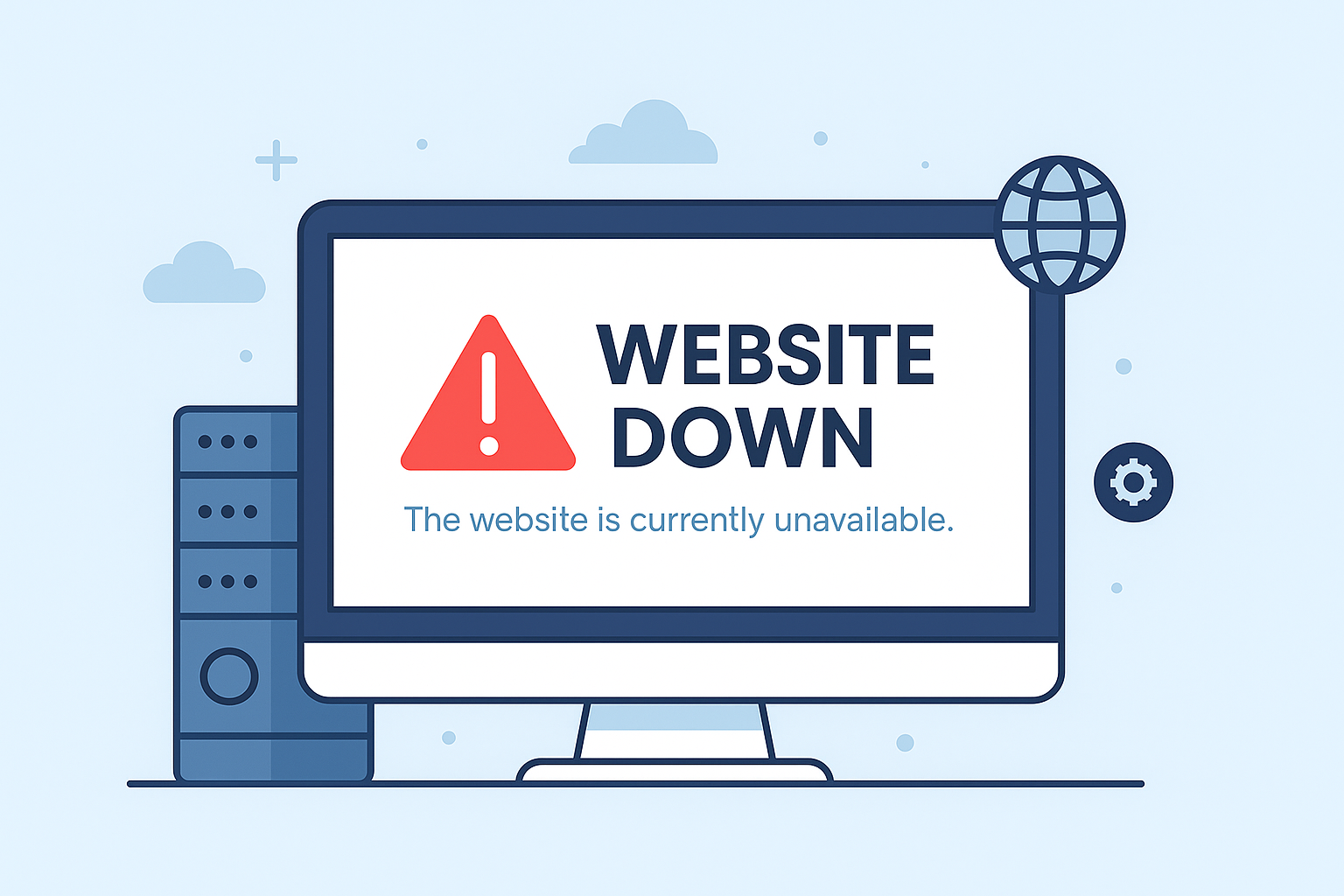
24
How to Check if a Website is Down (Step-by-Step Guide)
Learn how to check if a website is down with step-by-step methods. Use free tools like Recipeace Website Status Checker to confirm downtime, fix issues, and improve uptime.
Introduction: Why Websites Go Down
Nothing is more frustrating than trying to open a website and seeing an error message, a blank page, or the dreaded “This site can’t be reached.” But here’s the question: is the website really down, or is the issue on your side?
Websites go down all the time — from small blogs to giant platforms like Facebook or YouTube. Common reasons include:
- Server overloads (too much traffic)
- DNS errors
- Expired SSL certificates
- Hosting failures
- Local network or device issues
Before you assume the worst, you need a reliable way to check if the problem is the website or just you. That’s exactly where tools like the Recipeace Website Status Checker come in.
In this guide, we’ll cover everything you need to know about checking if a website is down, how to interpret error codes, and what steps you can take to fix issues.
Step 1: Use a Website Status Checker
The simplest way to check if a site is really down is by using an online tool.
Try it now: Recipeace Website Status Checker
How it works:
- You enter the website’s URL (for example, example.com).
- The tool pings the website from multiple servers worldwide.
- If all servers can’t reach it, the site is truly down.
- If some servers can reach it, the issue might be regional (like DNS propagation delays).
Why it’s better than guessing:
- Instant results.
- Tests from outside your own network.
- Confirms if it’s a global outage or just a local issue.
Step 2: Check with Other Devices or Networks
If the Website Status Checker says the site is fine, the problem could be:
- Your WiFi/router
- Browser cache
- Local DNS settings
Quick tests:
- Try loading the website from your phone’s mobile data.
- Restart your router.
- Use a different browser (Chrome, Firefox, Edge).
If the site loads elsewhere but not on your device, the issue is local.
Step 3: Understand Common Error Codes
When websites go down, browsers often display HTTP status codes or error messages. Here are the most common ones:
- 404 Not Found: The page doesn’t exist (but the site itself is online).
- 500 Internal Server Error: The website’s server has crashed.
- 503 Service Unavailable: The server is temporarily overloaded.
- 403 Forbidden: The page exists but you don’t have permission to view it.
- DNS_PROBE_FINISHED_NXDOMAIN: Domain name can’t be resolved (bad DNS).
- SSL Errors (ERR_CERT_COMMON_NAME_INVALID): Expired or misconfigured SSL certificate.
Pro tip: You can use the Recipeace HTTP Status Code Checker to get precise details on any website’s response.
Step 4: Check Website Uptime Reports
Big websites often have dedicated status pages (e.g., status.github.com, status.dropbox.com).
For smaller sites:
- Use uptime monitoring tools like UptimeRobot or Pingdom.
- Or search Twitter/Reddit — users often report outages in real time.
Step 5: Fix Issues If It’s Your Website
If you’re the website owner, downtime can be a nightmare. But most issues have simple fixes:
- Server Overload → Upgrade hosting or enable caching/CDN (Cloudflare, AWS).
- SSL Expired → Renew your SSL certificate (Let’s Encrypt is free).
- DNS Issues → Double-check nameservers and DNS records.
- Hosting Downtime → Contact your hosting provider.
- Coding Errors → Check error logs for PHP/JavaScript issues.
Use Recipeace tools like:
- SSL Checker → confirm SSL is valid.
- DNS Lookup → troubleshoot DNS problems.
Step 6: Prevent Future Downtime
Prevention is always better than cure. Here’s how to minimize downtime:
- Use uptime monitoring → free alerts when your site is down.
- Set up SSL auto-renewal.
- Distribute traffic with a CDN.
- Regularly back up your website.
- Optimize website speed → fast websites are less likely to crash.
How Downtime Affects SEO & Business
- User trust: Visitors may never return if your site is often down.
- SEO rankings: Googlebot may drop your site if it’s repeatedly unavailable.
- Revenue loss: For e-commerce, even a few minutes of downtime can mean lost sales.
Fun fact: Amazon once went down for just 30 minutes and lost over $66,000 per minute!
Conclusion: Don’t Panic, Check First
The next time you can’t reach a website, don’t assume the worst. Just follow this quick checklist:
Use the Recipeace Website Status Checker
Try another device or network
Understand the error codes
Look up downtime reports
Fix or prevent issues if you’re the site owner
With these steps (and the right tools), you’ll always know if a site is truly down or if it’s just you.
Contact
Missing something?
Feel free to request missing tools or give some feedback using our contact form.
Contact Us